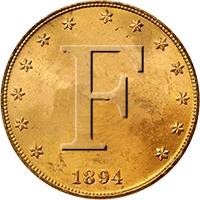Multiple tone mode is 28 tones. I know the earlier series X-70 referred to it as 99 tones. But since there are 28 notch segments, there can only be 28 different tones. To answer your question, the way that not using more tones could affect your number of finds would be that you have to spend more time looking at the TID instead of covering more ground. Regardless of how many tones you are able to effectively "process", rest assured your detector will beep when the coil passes over a target who's conductive value has been set to accept. It's just a matter of looking at the meter to confirm the target ID.
The reason I prefer multiple tone mode is two-fold..... one is that it allows me to "hunt by ear" and I don't have to look at the display to determine whether or not I want to stop and dig. As I said, each notch segment has it's own separate tone. Matching an audible tone to a display number allows me to keep my eyes on the soil under the coil. If I'm in an area that I want to cherry pick for quarters and dimes, I can do that with multiple tone mode.
two.... when I come across a deeply buried target, it will sometimes give me a "wrap around" high tone and make me think I've hit big silver. When I look at the numbers, they may bounce between +46, +48, -6 and -8. When I get a squeaker of a high tone, the first thing I do is slow down my sweep and go over it again. 75% of the time a slower sweep will lock in the actual TID value. But if it still gives me that little bleep of a high tone, I hover the coil over the target and center it under the coil. Then, while still slightly moving the coil back and forth over the target, I slowly bring the coil toward me. As the target gets near the edge of the coil, deeply buried iron will produce multiple different low tones as it leaves the field of detection. I refer to that combination of tones as harmonics. If I were to be using any of the other tone settings, (one tone, two tone, three tone or four tone) all ferrous targets (negative numbers on the TID) produce the same singular tone, and I wouldn't have those harmonic tones to let me know it is very likely a chunk of iron with mixed ferrous properties. JMHO HH Randy

